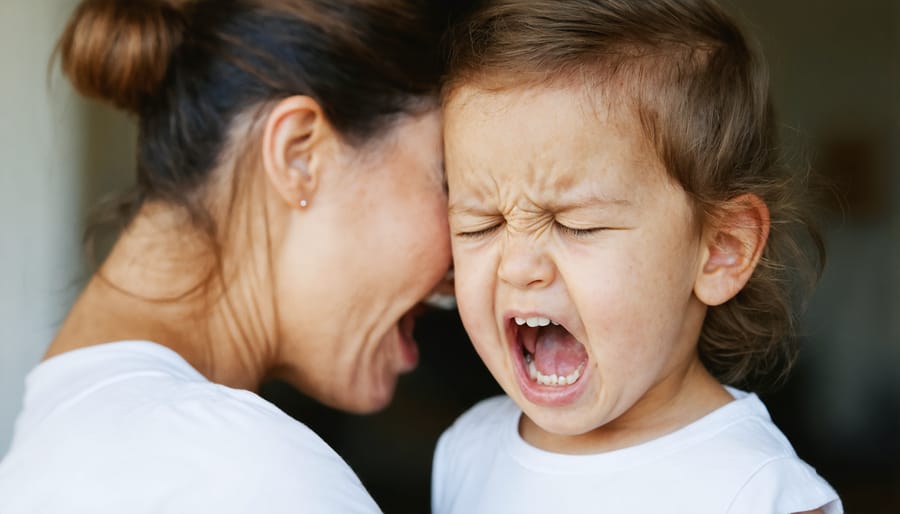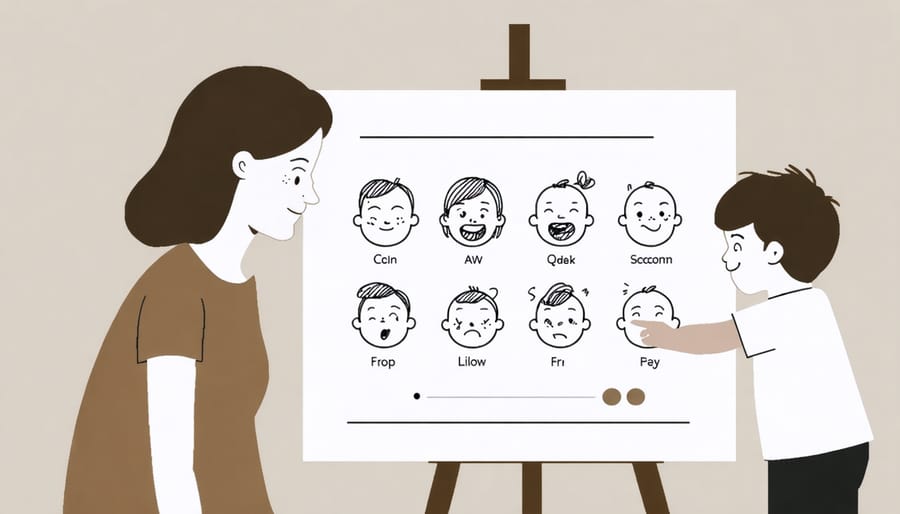
Picture this: A three-year-old throws an epic tantrum in the grocery store. While traditional parenting might resort to threats or time-outs, gentle parenting takes a dramatically different approach – one that’s transforming millions of parenting journey and beliefs worldwide.
Gentle parenting isn’t just another passing trend – it’s a science-backed approach that combines empathy, respect, and clear boundaries to nurture emotionally intelligent children. Unlike permissive parenting, which lacks structure, or authoritarian methods that rely on punishment, gentle parenting empowers both parent and child to work together through challenges while maintaining loving connections.
Think of gentle parenting as building a bridge between your child’s emotional world and their developing ability to regulate themselves. Instead of demanding immediate compliance, this approach acknowledges that children are learning to navigate big feelings with still-developing brains. By responding with understanding rather than reaction, we’re not just solving immediate behavioral issues – we’re laying the groundwork for lifelong emotional intelligence and healthy relationships.
But what does this actually look like in practice? For parents tired of power struggles and seeking a more peaceful household, gentle parenting offers practical solutions that honor both the parent’s need for structure and the child’s need for understanding. The results speak for themselves: children who feel heard grow into confident, resilient individuals capable of healthy emotional expression and strong boundaries.
What Gentle Parenting Really Means (And What It Doesn’t)
The Core Principles of Gentle Parenting
At the heart of gentle parenting lies four essential principles that work together to create a nurturing and respectful environment for both parents and children. As a mom who’s embraced these mindful parenting habits, I can tell you that understanding these core elements makes all the difference.
First, there’s empathy – putting yourself in your child’s shoes and recognizing that their feelings, no matter how big or small, are valid. It’s about acknowledging their emotions without judgment, even during those challenging grocery store meltdowns we’ve all experienced.
The second principle is respect, which means treating children as capable individuals with their own thoughts and feelings. Instead of demanding blind obedience, we focus on building mutual understanding and trust.
Boundaries form the third principle, but with a gentle twist. Rather than rigid rules, we set loving limits that keep everyone safe while explaining the ‘why’ behind them. This helps children understand and internalize good behavior rather than just following orders.
Finally, there’s connection – the foundation that makes everything else possible. By prioritizing our relationship with our children through quality time, active listening, and genuine presence, we create a secure base from which they can explore and grow confidently.
These principles aren’t about being perfect; they’re about creating a compassionate framework for family relationships that grows stronger over time.

Common Myths About Gentle Parenting
Let’s clear up some common misconceptions about gentle parenting – because no, it’s not about letting your kids run wild! As a mom who’s been on this journey for several years, I’ve heard all the myths, and it’s time to set the record straight.
The biggest misconception? That gentle parenting means no boundaries. In reality, it’s quite the opposite! We set clear, age-appropriate boundaries; we just communicate them differently. Instead of harsh punishments, we focus on understanding and guidance while maintaining firm limits.
Another myth is that gentle parents never say “no” to their children. Trust me, we definitely do! The difference is that we often explain the reasoning behind our decisions, helping our children understand the ‘why’ rather than just enforcing rules without explanation.
Some people believe gentle parenting creates entitled children who can’t handle the real world. Actually, this approach helps develop emotional intelligence and resilience. By acknowledging feelings while setting boundaries, we’re teaching children how to manage emotions effectively.
I’ve also heard that gentle parenting is exhausting because you’re always negotiating. While it does require patience and consistency, it’s not about endless negotiations – it’s about clear communication and mutual respect. The long-term benefits of raising emotionally secure children make it worthwhile.
Remember, being gentle doesn’t mean being permissive. It means being both kind and firm, creating a supportive environment where children can thrive while learning important life skills.
Real-Life Examples From Our Family’s Journey

Handling Tantrums with Connection
I’ll never forget the day my three-year-old had an epic meltdown in the grocery store. As she lay on the floor, screaming about wanting a candy bar, I felt all eyes on me. My old instincts screamed to scold her or rush out embarrassed, but instead, I took a deep breath and remembered my gentle parenting toolkit.
I knelt beside her, maintaining a calm presence despite my racing heart. “I see you’re really upset about the candy,” I said softly. “It’s hard when we can’t have something we want.” Rather than dismissing her feelings or rushing to fix them, I simply stayed with her, offering understanding and connection.
To my surprise, her sobs began to quiet. She looked up at me with tear-stained cheeks and climbed into my lap. We sat there together, right in the middle of the cereal aisle, as she regulated her emotions. Once calm, we talked about healthy snack alternatives and continued our shopping peacefully.
This moment taught me that tantrums aren’t manipulation tactics – they’re expressions of overwhelming emotions in a developing brain. By responding with empathy instead of punishment, we teach our children that all feelings are valid, even if all actions aren’t acceptable. The key isn’t to prevent tantrums but to support our children through them, strengthening our connection in the process.
Setting Boundaries Without Power Struggles
Setting boundaries while maintaining a gentle approach might seem challenging at first, but it’s entirely possible to be both firm and kind. I remember when my toddler was testing limits around bedtime – instead of engaging in power struggles, I learned to acknowledge his feelings while standing firm on our routine.
The key is to shift from a “because I said so” mentality to offering clear, age-appropriate explanations. For example, instead of demanding “Stop jumping on the couch right now!” try “I see you have lots of energy to jump. The couch isn’t safe for jumping, but we can go outside where you can jump all you want.”
When children push back against boundaries, stay calm and empathetic while maintaining your position. “I understand you’re upset about leaving the park. It’s hard to stop doing something fun. We need to go home now for dinner, but we can come back tomorrow.” This approach validates their feelings while keeping the boundary intact.
Some effective strategies include:
– Using “when/then” statements: “When you put your toys away, then we can read a story”
– Offering limited choices: “Would you like to wear the red coat or the blue coat?”
– Setting clear expectations beforehand: “We’re going to the store for milk and bread only”
– Following through consistently with stated consequences
Remember, children feel safer with clear boundaries, even if they protest them. The goal isn’t to eliminate all negative emotions but to help children navigate them while maintaining necessary limits.
Building Emotional Intelligence Together
One of the most beautiful aspects of gentle parenting is how it creates a mutual journey of emotional growth. As I discovered in my own parenting experience, this approach doesn’t just help our children develop emotional awareness – it transforms us as parents too.
When my daughter had her first major meltdown in a grocery store, instead of immediately reacting with frustration, I took a deep breath and remembered to validate her feelings. “I see you’re feeling upset right now,” I said calmly. This simple acknowledgment not only helped her feel understood but also made me more aware of my own emotional responses.
Through gentle parenting, we learn to build emotional resilience together. When we model emotional awareness by naming our feelings and showing healthy ways to process them, our children naturally begin to mirror these behaviors. They learn that all emotions are valid, even the challenging ones.
I’ve noticed how my daughter now uses phrases like “I feel frustrated” or “I need a moment to calm down” – words she learned from our gentle parenting journey. This shared emotional vocabulary has created deeper connections and more meaningful conversations in our family, proving that when we grow together, we grow stronger.
Remember, this process takes time and patience. Some days will be harder than others, but each interaction is an opportunity for both parent and child to develop greater emotional intelligence and understanding.

The Challenges and Growth Points
When Gentle Parenting Feels Hard
Let’s be honest – even when you’re committed to gentle parenting, some days feel impossible. Whether you’re dealing with a tantrum in the grocery store or struggling with your own emotional regulation, it’s completely normal to find this approach challenging at times.
I remember standing in my kitchen, taking deep breaths while my toddler had their third meltdown of the day. In these moments, it’s essential to remember that gentle parenting isn’t about being perfect – it’s about progress and connection. To navigate parenting challenges more effectively, try these practical solutions:
First, build your support system. Connect with other parents who practice gentle parenting, whether online or in local groups. Having someone who understands your journey can make a world of difference.
Second, prepare for challenging moments. Create a calm-down corner for both you and your child. Stock it with comfort items, breathing cards, or sensory toys. When emotions run high, having these tools readily available can help everyone reset.
Finally, be gentle with yourself. Some days, you might slip back into reactive patterns – that’s okay. What matters is how you recover and reconnect. Use these moments as learning opportunities to model emotional awareness and repair for your children.
Remember, gentle parenting is a marathon, not a sprint. Taking care of yourself is just as important as caring for your children. When you’re feeling overwhelmed, it’s perfectly fine to step back, take a break, and start fresh.
How We Handle Parent Burnout
Let’s be honest – even the most dedicated gentle parents have moments where they feel completely overwhelmed. I remember one particularly challenging day when both my toddler and preschooler were having simultaneous meltdowns, and I could feel my patience wearing dangerously thin. That’s when I realized that managing parent burnout isn’t just helpful – it’s essential for maintaining a gentle parenting approach.
The key is to build your self-care toolkit before you reach your breaking point. Start by identifying your stress triggers and early warning signs. For me, it’s when I notice myself sighing heavily or speaking through clenched teeth. These are signals that I need to pause and reset.
Create a list of quick calming strategies you can use in the moment. Deep breathing, counting to ten, or even stepping into another room for 30 seconds can help you maintain composure. Remember, taking care of yourself isn’t selfish – it’s modeling healthy emotional regulation for your children.
Establish a support network of fellow parents who understand and practice gentle parenting. Whether it’s through local parenting groups or online communities, having people who “get it” can be incredibly validating and energizing.
Schedule regular breaks, even if they’re small. This might mean trading childcare with another parent, asking your partner to take over while you take a walk, or waking up 15 minutes earlier for some quiet time with your coffee.
Most importantly, be gentle with yourself. Some days won’t go as planned, and that’s okay. What matters is that we keep showing up, learning, and growing alongside our children.
As I reflect on our family’s journey with gentle parenting, I’m amazed by the profound changes we’ve experienced. What started as an uncertain experiment has blossomed into a transformative approach that has strengthened our bonds in ways I never imagined possible.
The most beautiful part has been watching my children develop emotional intelligence and problem-solving skills that I didn’t possess until well into adulthood. When my daughter helps her younger brother through a difficult moment, using the same compassionate words and techniques we’ve modeled, my heart swells with pride and hope for the future.
Yes, gentle parenting requires more patience, presence, and intentionality than traditional approaches. There are still challenging days when I have to remind myself to pause and respond rather than react. But the rewards – the deep trust, open communication, and genuine connection with my children – make every conscious effort worthwhile.
I’ve noticed that these principles have rippled into other relationships in my life too. The skills of active listening, emotional awareness, and respectful communication have improved my marriage and even my workplace interactions. It’s truly a holistic approach to human connection.
To parents considering or just beginning their gentle parenting journey: be patient with yourself. Remember that this isn’t about perfection – it’s about progress and growing together with your children. Every small step toward understanding, empathy, and conscious parenting creates lasting positive change in your family dynamic.
The legacy we’re creating through gentle parenting extends far beyond our immediate family. We’re raising children who will carry these emotional tools and compassionate approaches into their own relationships and future families.



